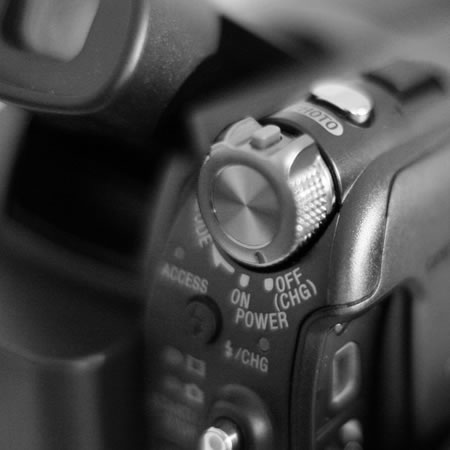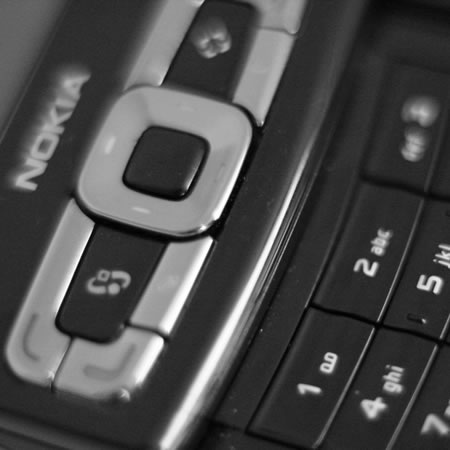This is the third time I have written a top ten list of technologies, I did the same in 2008 and 2009. It’s interesting to compare the three lists to see what I was using, what I am still using and what new stuff I am using. This list focuses on physical technologies and gadgets and I have also been working on a list of web tools that will be in another blog post.
So what didn’t make my list?
The MiFi which was number eight last year got used a lot less, partly as I used the Google Nexus one more for portable wifi and the issues I had with the MiFi when trying to use it on the train.
which was number eight last year got used a lot less, partly as I used the Google Nexus one more for portable wifi and the issues I had with the MiFi when trying to use it on the train.
The Sony video cameras in previous top tens got slightly ursurped by both the Kodak and the iPhone 4G this year, they were used, but no where near the level I used them in 2009 and 2008.
The 3G USB Stick I had in my top ten in 2008, didn’t make the list in 2009 and I actually handed back to our IT department in 2010!
10. i7 iMac
The iMac was my number two last year and in many ways is still a really excellent computer. Very fast and more than capable of doing lots of things all at the same time. It’s still in my top ten, as I still use it every day for lots of different activities.
was my number two last year and in many ways is still a really excellent computer. Very fast and more than capable of doing lots of things all at the same time. It’s still in my top ten, as I still use it every day for lots of different activities.
9. iPhone 3GS
The iPhone 3GS was my number one technology in 2009 and I have continued to use the 3GS throughout 2010 as my main home mobile phone. Why is it not higher up, well I upgraded my work mobile phone to the iPhone 4G. The 3GS though is the phone I use at weekends when I am out, it’s the phone I use on the sofa in the evenings and it’s also the phone I use when the battery runs out on the 4G. I use a Logic3 case with an extended battery. It’s also the device I use for sat nav, using the TomTom software. Alas the one key component of the 3GS lets it down and that is its ability to make phone calls. Too often it will drop calls for my liking.
was my number one technology in 2009 and I have continued to use the 3GS throughout 2010 as my main home mobile phone. Why is it not higher up, well I upgraded my work mobile phone to the iPhone 4G. The 3GS though is the phone I use at weekends when I am out, it’s the phone I use on the sofa in the evenings and it’s also the phone I use when the battery runs out on the 4G. I use a Logic3 case with an extended battery. It’s also the device I use for sat nav, using the TomTom software. Alas the one key component of the 3GS lets it down and that is its ability to make phone calls. Too often it will drop calls for my liking.
8. Edirol R-09HR

I have been using the Edirol for a few years now, it was in my top ten in 2008, and the Edirol R-09HR now back in for 2010. Recording as either WAV or MP3 direct to an SD card, the audio quality is excellent. Very easy after recording to connect a USB cable and copy the recordings over to edit in Audacity or Garageband. It is very portable and the fact it uses AA batteries means if they run out, they are easy to replace. Main downside is cost, but in this case I do believe it is very much you get what you pay for.
now back in for 2010. Recording as either WAV or MP3 direct to an SD card, the audio quality is excellent. Very easy after recording to connect a USB cable and copy the recordings over to edit in Audacity or Garageband. It is very portable and the fact it uses AA batteries means if they run out, they are easy to replace. Main downside is cost, but in this case I do believe it is very much you get what you pay for.
7. Blue Snowball Microphone
I have been recording a lot this year, not just e-Learning Stuff podcasts, but also symposia and other discussions. The Blue Snowball Microphone is certainly a key tool for this. I also use it at home for Skype and making recordings.
is certainly a key tool for this. I also use it at home for Skype and making recordings.
The main downside is that the size of the microphone makes it less than ideal for taking to events and carrying in a bag. However the quality of recordings means that I am more keen to use this then any other microphone.
6. Kodak Zi8
This for the first part of the year was a great little camera that I used for both video and stills. Alas I “lost” mine after a mobile learning event I ran at the college in July. We have two class sets at college and I have used the Kodak Zi8 at various events, so that’s another reason for including it in my top ten.
at various events, so that’s another reason for including it in my top ten.
5. Amazon Kindle

The UK version of the Kindle was available from September 2010, and despite owning an iPad I did buy a Kindle and have been impressed. With a battery life measured in weeks, a great book selection, what I like most about the Kindle is that I can continue to read Kindle books on other devices such as the iPad. This is not just about the Kindle device, but also the Kindle app for other devices.
was available from September 2010, and despite owning an iPad I did buy a Kindle and have been impressed. With a battery life measured in weeks, a great book selection, what I like most about the Kindle is that I can continue to read Kindle books on other devices such as the iPad. This is not just about the Kindle device, but also the Kindle app for other devices.
4. Google Nexus One
My Nokia N95 which was number one in 2008 and in the top ten in 2009, I retired it this year after getting the Google Nexus One
which was number one in 2008 and in the top ten in 2009, I retired it this year after getting the Google Nexus One . This was an Android phone and the first time I managed to use the mobile OS on a regular basis.
. This was an Android phone and the first time I managed to use the mobile OS on a regular basis.
I really do like this phone and I certainly over 2010 recommended it to people who didn’t want an iPhone. The main reasons I like it is the portable wireless hotspot (wifi tethering) that came with the Froyo 2.2 update, the screen which is gorgeous and the voice control. It’s not perfect, I do find that the OS is not as stable as I think it should be. However as a phone for making phone calls, it works very well, unlike other phones I could mention…
3. iPhone 4
The iPhone 4 is what the iPhone should have been from day one. Finally the iPhone came of age. It is one of the best phones I have ever used.
is what the iPhone should have been from day one. Finally the iPhone came of age. It is one of the best phones I have ever used.
The camera was better than ever before and the phone also came with a front facing camera. This is something the Nokia N95 has had since 2007! However the improvements in performance and the wonderful “retina” screen certainly are welcome.
What I like about the iPhone is the ease of use, the browsing experience, the apps. There is so much I am doing on this phone and so much more I could be doing on this phone. I for example have not yet used Facetime, but I wonder if that’s more down to I know very few people with an iPhone 4 and the one time I tried to make a Facetime call, it didn’t work!
Though I could replicate the antenna problem this didn’t impact on me as much as it seemed to in the US. If anything I found the iPhone 4 was much better at making phone calls than the 3GS was. It has better reception, but will still drop calls.
Multi-tasking with iOS4 certainly made the phone easier to use and meant that switching between apps didn’t always result in a loss of data or information.
The key advantage of the iPhone for me is the sheer number of apps and the quality and quantity have changed how I use a phone.
I do think the iPhone 4 is one of the best phones I have ever used and I am really pleased with it.
2. BT Infinity FTTC
When ADSL came to my home town I was one of the first in the area to get it. It was great going from dial-up 44kbps to a broadband connection of 385kbps. Over the years this did rise to 1.3Mbps and for a lot of things was great. However as more and more people got broadband, the contention ratio kicked in and the speed dropped to under 1Mbps for most of the day.
For general browsing it was okay, however downloading large files was a real pain and I use to schedule these overnight. For example upgrading my iPhone would take anything up to 24 hours! Using BBC iPlayer was generally also a non-starter and most of the time I wouldn’t even bother trying.
So when fibre to the cabinet (FTTC) arrived in my area, I signed up as fast as my ISP would let me. With 40Mb down and 10Mb up this is significantly faster than the 1.3 down and 0.6 up I had before.
It has already changed how I use the internet, whereas before I would probably not consider downloading a film from iTunes during the day, as it would soak up my bandwidth and would take hours to download; now it takes under five minutes to download! No problems with downloading large files and updates now. The other key advantage is streaming video, which was almost pointless before due to buffering, and like downloading, previous streaming would soak up my bandwidth, having 40Mb down means I can stream and do other stuff at the same time. Skype works really well too and is a lot more stable than before.
Having really fast internet is making my work and home life easier and I am having less issues with using different internet services and uploading is a dream now.
1. iPad

Announced in January and released (in the UK) in May, I was even surprised by how much I now use the iPad . It has in many ways replaced how I use a laptop at home, at work, whilst travelling and at events. When I ordered mine, I didn’t think it would have that much of an impact, but it has and continues to have an impact.
. It has in many ways replaced how I use a laptop at home, at work, whilst travelling and at events. When I ordered mine, I didn’t think it would have that much of an impact, but it has and continues to have an impact.
In July I wrote about how I took just the iPad to an event in London and how I just used the iPad. I did the same at the RSC SW Conference too.
I do think the iPad is an ideal device for conferences and events and wrote quite a lengthy piece on how it could be used to amplify and enhance conferences.
Certainly compared to using a large laptop, an iPad is a much better device for using on the train.
At work I use the iPad for dealing with e-mail and my calendar and quickly checking things on the VLE. For some meetings I do need to take a laptop as some tools we use rely on Flash or Java and that is one of the main weaknesses of the iPad is that these kinds of tools can not be used on it.
At home, I use the iPad on the sofa, in the kitchen and around the house. I like how I can use it to quickly check the news, e-mail, the weather, social networks and general browsing the web. I like the casual games you can get for the iPad and its media capability easily surpasses any other mobile devices I have used. It’s not all perfect, I would like to stream (easily) video and audio from my iMac to my iPad and not all web functions work as I would like them to. Blogging on the iPad is still a bit hit and miss for me.
So my number one technology for 2010 is Apple’s iPad, I wonder if it will still be in my top ten next year?
Are any of your favourite technologies in this top ten? What have I missed?















